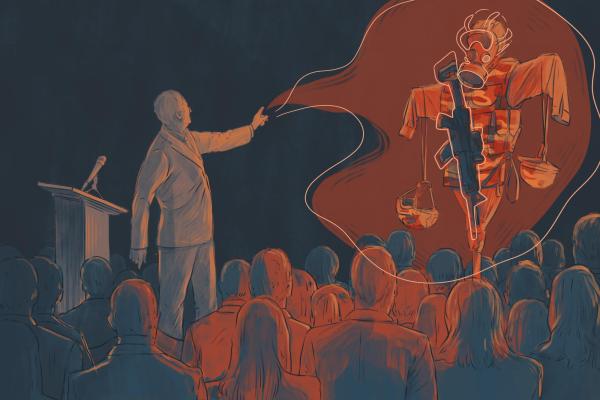Fidesz, the populist party in control of Hungary, and AUR, a far-right party from Romania, share more similarities than might be anticipated. Are they friends that pretend to be enemies or enemies that share the same core of tricks?
Codruța monitored the political narratives used in AUR’s strategic communication for months. Zoltán Sipos and his colleagues from Atlaszo.hu were tracking the Hungarian media. After a few months, they proved that both parties employed common disinformation strategies that aligned with Russian propaganda. The team was able to reveal the connection between the Kremlin, the area of Székely Land and two political parties in Hungary and Romania.
Following their intuition and little clues they had, the team sensed the opportunity to develop an investigative piece based on the fact that the population of Székely Land mostly consumed Hungarian media, as Zoltán had revealed in the past. They came up with the idea to set an array of words to look for.
Brainstorming, spending countless hours in front of their computers, long Excel tables and (a lot of) Google search were the most distinctive parts of the research. Some articles and archives were not available anymore, so they had to access them using Wayback Machine.
Social media also proved useful when observing the parties’ political communication. “We used inVID to check if some videos were exactly what they were pretending to be and we also made a map of AUR’s spending, because they spent some money on political ads on Facebook and we wanted to connect the pages that were sponsoring their content with the party”, says Codruța.
They found proof that the parties’ discourse techniques were common. These results alone were very important but not quite convincing if not paired with an explanation. After some discussions, the journalists decided that getting guidance from experts would be a good idea. Their findings were analysed by Eastern Europe historians and media specialists who are interested in the Russian media and in the way the audience perceives misinformation.
Codruța and Zoltan finally connected the dots, wrote their stories and were ready for publication. The investigation was complete, round and involved all possible aspects. However, they still needed to go through the story a few more times for fact-checking purposes and to provide proof for every sentence they had written.
Since the story was published in Rise Project, which is a part of OCCRP, it was mandatory to follow a very thorough verification process. Although a laborious process, gathering all the supporting data did not take too long - about a week and a half. “In the end it was great though, because when the piece was published, we were definitely sure that each sentence accurately described a source of information”, says Codruța.
It proved to be a strong story that received a great reaction, and the team is open to the idea of doing a follow-up, maybe around the time of the European elections, which would be a relevant period to show that disinformation is not a one-time phenomenon when it comes to these parties.
